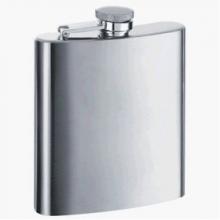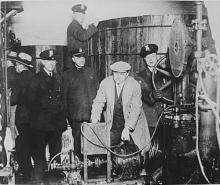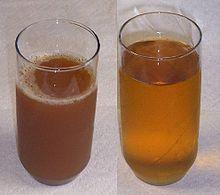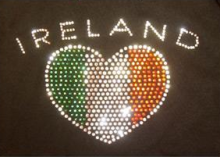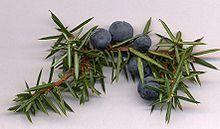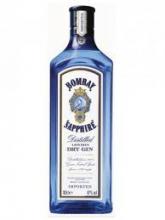The Lush Chronicles: The Philosophy of the Flask
It's the holiday season. We're in the thick of it now. Big meals, annoying music, people pretending that Black Friday means anything in the Internet age. Oh, and family events. Some folks who have all the luck actually like their families. Even rarer are those freaks of nature who have a strong bond with the collection of obligated strangers they call extended family. For the rest of the world, the holiday season is a time when we're forced by guilt and convention to interact with people we'd rather not even know, and just because we share a little more DNA with them than with most people. There are only two kinds of people who go through this ordeal sober: Insane, masochistic adults and put-upon children. All the savvy folks stay properly lubricated through whatever shitty shindig they're forced to attend. That's why people hide hard liquor in ridiculous drinks like eggnog. It's not self-medication and drinking during the few hours of sunlight we get in the harsh winter months, it's festive. For those who would rather not choke down something that tastes and sounds as disgusting as "nog" and are sensitive to the disapproving stares of the family as Uncle Jake pours his fifth whiskey rocks in two hours, there's just one option left. It's time to start packing a flask.
Before I get into how to do flask-drinking properly, I have to tack on the disclaimer that carrying a flask does not make you cool. Just like carrying around a pack's worth of cigarettes in a shiny case doesn't change the fact that you're pathetically addicted to nicotine while any civilized enthusiast of tobacco has learned how to enjoy the stuff as an occasional indulgence without forming a habit, carrying a flask full of liquor is functionally no different than having a bottle with you at all times. Think of a flask not as a Swiss Army knife but as a parachute. Only carry one into a situation where you might need it and only deploy it when you absolutely must.
The point of flasks is discretion. They exist so you can drink when it would be socially unacceptable to do so. That in mind, don't whip out your 12 oz monster full of Jack in the presence of those who have sideways glances at the ready. Sneak a stout swig in the bathroom, a low-traffic corner or secreted into a less scandalous beverage when you're sure nobody is watching.
Also, don't make the rookie mistake of getting proper drunk on your flask provisions. People will notice and you'll have nowhere to go but sober in the aftermath. The physical limitations of flasks (except those absurd magnums that couldn't even fit in a zoot suit pocket) encourage the maintenance of a gentle buzz, not outright sloppiness. Remember, you're taking the edge off of an uncomfortable situation. Show some restraint and come up with excuses not to drive.
If you must carry a flask, get a proper one. Stainless steel, glass lined, eight to twelve ounces, attached cap. This variety is durable, easy to clean (never in the dishwasher), won't impart any unpleasant metal flavor to your booze, small enough to fit in a pocket but large enough to carry more than enough liquid to do the job, and free from any small parts that might be misplaced.
As for what kind of liquor to carry in your flask, spring for something of reasonable quality. Remember, you'll be drinking the stuff straight. Monarch may be cheap enough to last all weekend without denting your bank account, but you'd be better off sipping cough syrup. Spiced rum is a good choice, as is call brand bourbon. If white liquor is your preference, steer clear of gin. That stuff doesn't hold up well at room temperature and above. Instead, go for a vodka with strong mineral notes so you won't drink it too fast. Don't be a dummy and fill the flask with sweet liqueur. That'll just make you stink like rancid candy and get sick before the night's over. Same goes for flavored vodka.
Though I usually end by saying something like this, I can't actually recommend carrying a flask at difficult social gatherings. There are healthier, more rational ways to handle being put in an uncomfortable situation. As always, if you feel like taking the lush's way out, make sure to do it right so you don't turn into a drunk.
